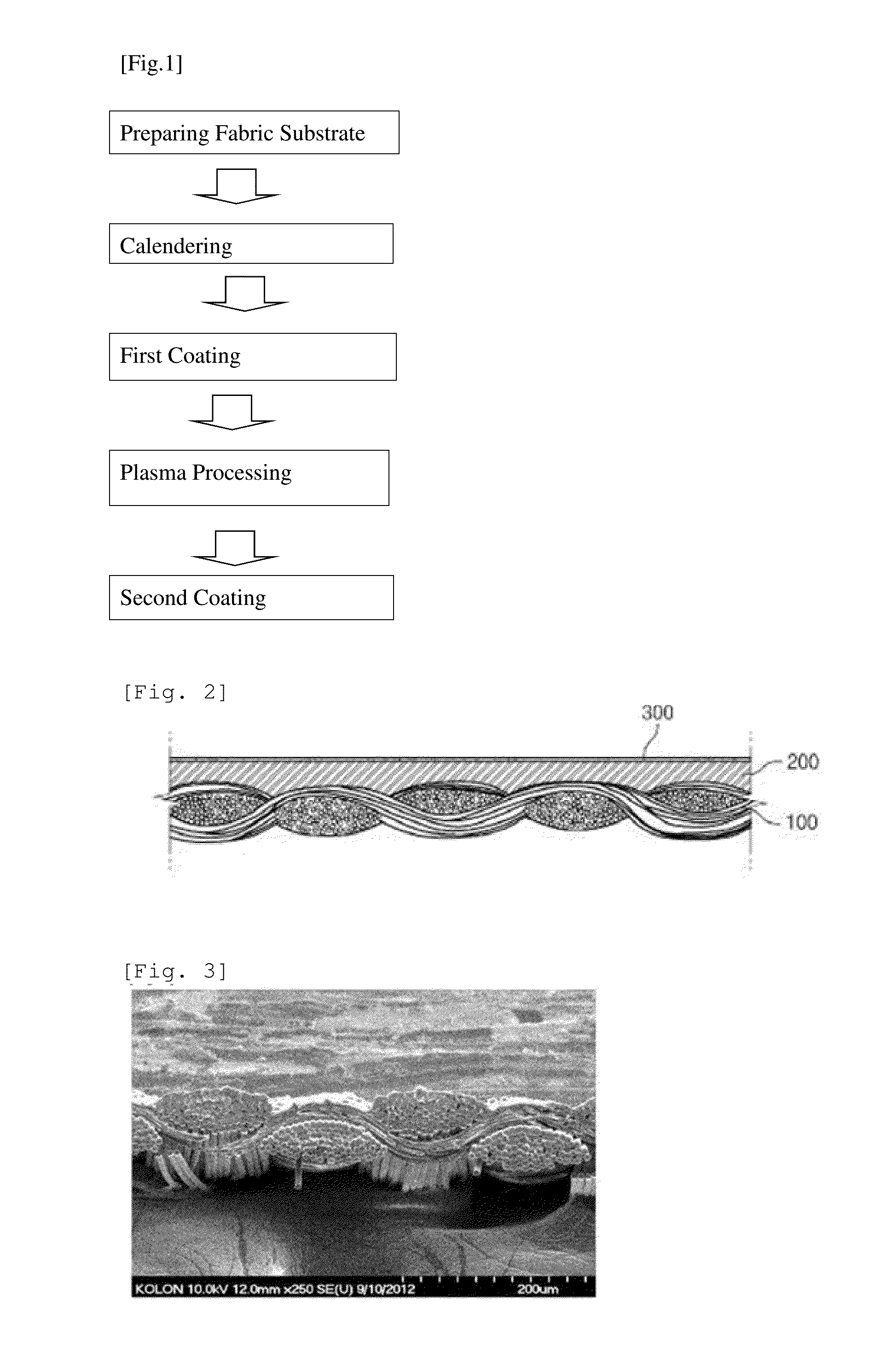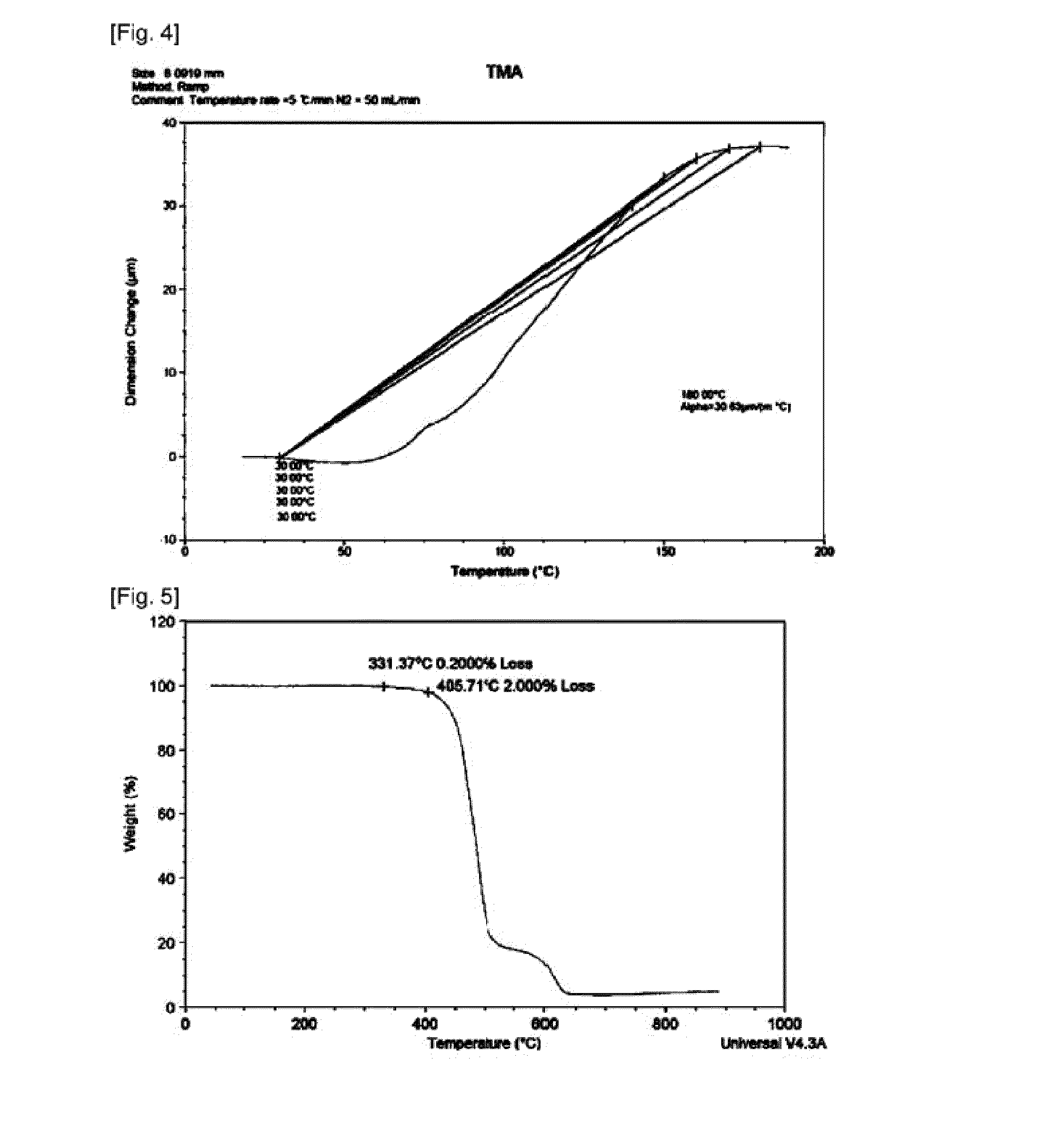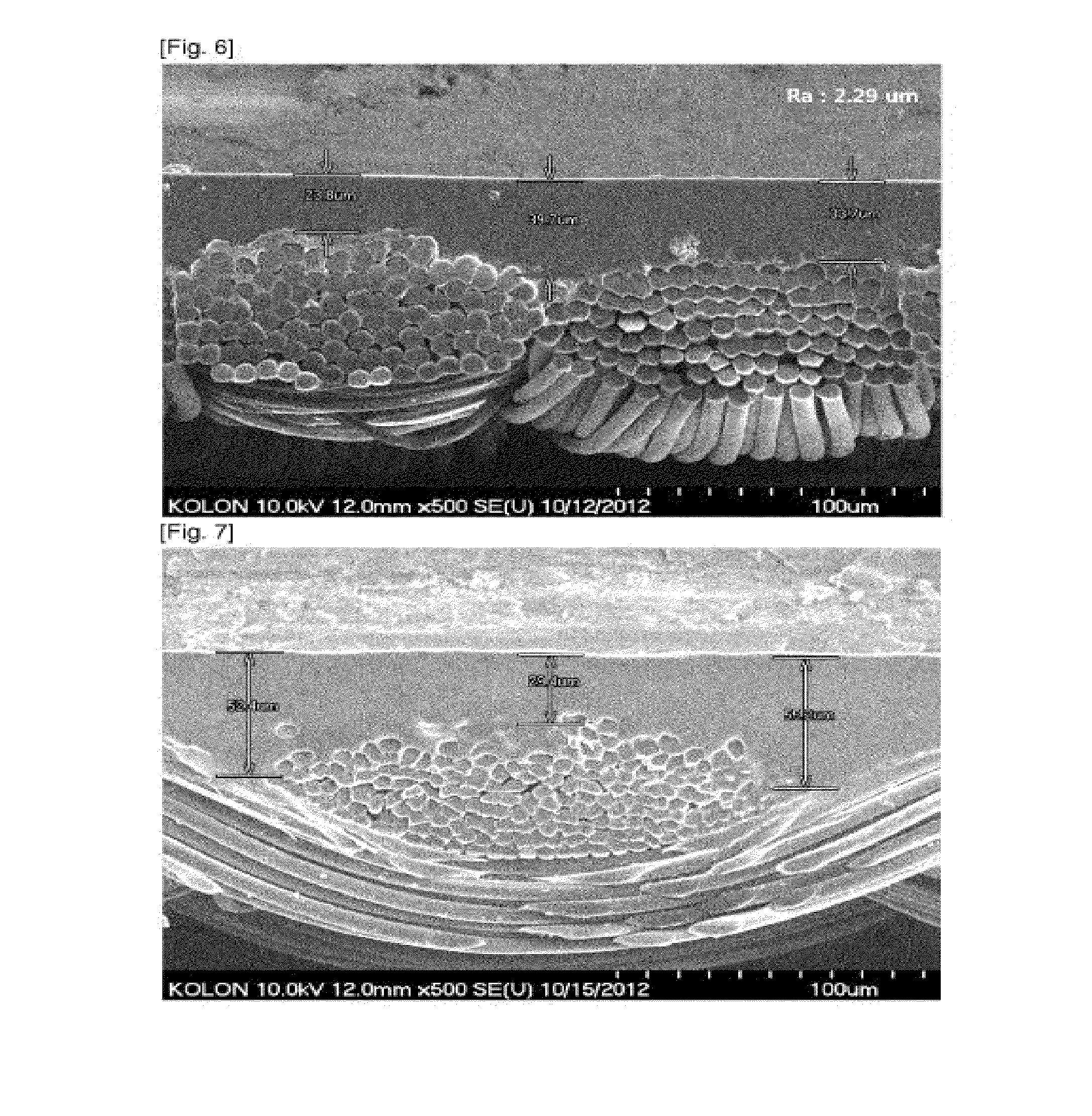Method for manufacturing planarized fabric substrate for flexible display
a flexible display and fabric substrate technology, applied in the direction of final product manufacturing, identification means, instruments, etc., can solve the problems of limited flexibility of flexible displays employing plastic and film materials, flexible displays that do not have drapability, and are not exploited, so as to improve flexibility, thermal stability and dimensional stability, the effect of improving flexibility and elasticity
- Summary
- Abstract
- Description
- Claims
- Application Information
AI Technical Summary
Benefits of technology
Problems solved by technology
Method used
Image
Examples
example
[0075]A calendering step was processed with respect to a fabric substrate formed by polyethylene terephthalate at a temperature of 150° C. and under the condition of 3.0 kg / cm2.
[0076]After the calendering step, the dimensional stability and thermal stability of the fabric substrate were shown in FIGS. 3 and 4, respectively.
[0077]After that, a slot coating was performed with respect to silane with epoxy functional group on a surface of the fabric substrate at room temperature. A first-coating step for curing and drying was performed during 3 minutes at a temperature of 150° C. While curing, a first planarization layer flowed to fill curved portions.
[0078]After forming the first planarization layer, smoothness (Ra) value, thickness of thin-film, a cross-section image of SEM were shown in FIG. 5.
[0079]A plasma-processing step with respect to the first planarization layer at room temperature was performed in ambient gases of argon (Ar) of 7 Lpm and oxygen (O2) of 30 scm, a power of 200 ...
PUM
| Property | Measurement | Unit |
|---|---|---|
| temperature | aaaaa | aaaaa |
| temperature | aaaaa | aaaaa |
| temperature | aaaaa | aaaaa |
Abstract
Description
Claims
Application Information
 Login to View More
Login to View More - R&D
- Intellectual Property
- Life Sciences
- Materials
- Tech Scout
- Unparalleled Data Quality
- Higher Quality Content
- 60% Fewer Hallucinations
Browse by: Latest US Patents, China's latest patents, Technical Efficacy Thesaurus, Application Domain, Technology Topic, Popular Technical Reports.
© 2025 PatSnap. All rights reserved.Legal|Privacy policy|Modern Slavery Act Transparency Statement|Sitemap|About US| Contact US: help@patsnap.com



